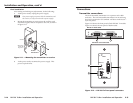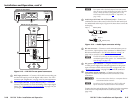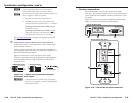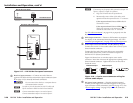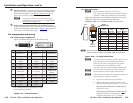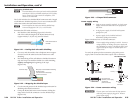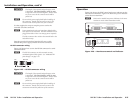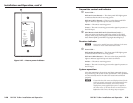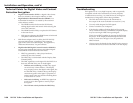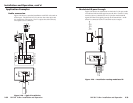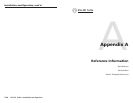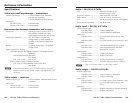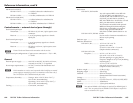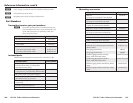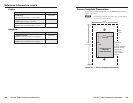
DVI 201 Tx/Rx • Installation and Operation
Installation and Operation, cont’d
2-30
DVI 201 Tx/Rx • Installation and Operation
2-31
Technical Points for Digital Video and Content
Protection Encryption
• Digital Visual Interface (DVI) is a digital video format
that was created by the computer industry in 1999.
• High Definition Multimedia Interface (HDMI
™
) is a
multimedia format that was created by the consumer
video industry in 2003.
The HDMI format is built onto the DVI format,
adding digital audio and control while reducing the
size of the connector.
The HDMI format is likely to replace the DVI format
in the near future.
With passive adapters, the HDMI format is backward
compatible with the DVI format.
• With Extron adapters and/or cables, the DVI 201 fully
supports either format, regardless of the connector
type on the video source and display. See appendix A,
"Reference Information," for part numbers.
• High-bandwidth Digital Content Protection (HDCP) is
an encryption method that protects copyrighted digital
entertainment material that uses DVI video.
HDCP is generated by video player hardware,
enabled by the video content.
The HDCP key is transmitted with the Display Data
Channel (DDC).
The DDC signal line was designed for the DDC’s low
data rate; the HDCP key rate is much higher.
♦ Without active buffering, an HDCP key signal
can travel only a short distance. The display
may properly receive the digital video signal, but
not the HDCP key. Without the key, the display
cannot decrypt the video signal. Symptoms of
undecrypted video may include a flashing black
or blue screen or “snow”.
♦ With active buffering, an HDCP key signal can
travel as far as other signals to ensure proper
decryption.
♦ The DVI 201 actively buffers the HDCP key.
Troubleshooting
DVI signals run at a very high frequency and are especially
susceptible to bad video connections, too many adapters,
or cables that are too long. To avoid the loss of an image or
introduction of image jitter, follow these guidelines:
• The DVI cable on the input to the transmitter or
the output of the receiver should not exceed 10' (3 m).
• Use only cable designed for DVI signals.
• Limit or avoid the use of adapters.
• If the display exhibits a flashing black or blue screen,
snow, or other distortion, a non-HDCP compliant display
may be receiving an HDCP-encrypted signal.
Check for an HDCP problem by ejecting the DVD from
the player. If the display distortion stops and the DVD
menu or screen saver image is clear, the problem is
HDCP-related.
• Always power the display before the DVI video source in
order for the source to retrieve the DDC from the display.



